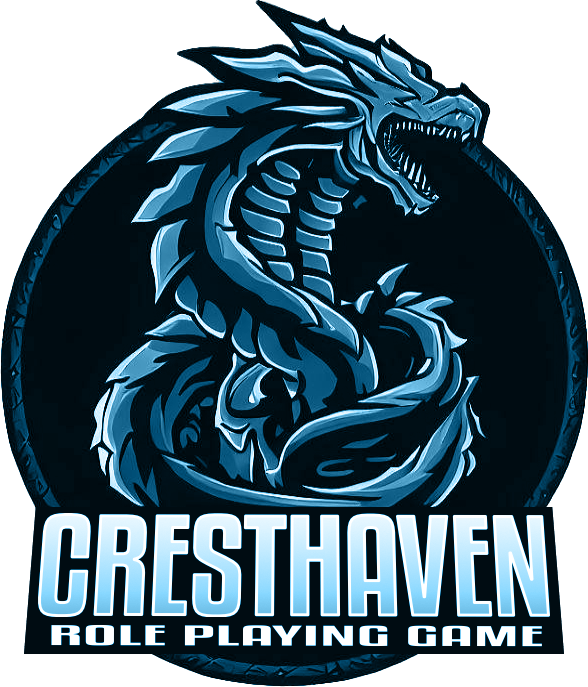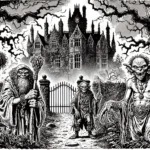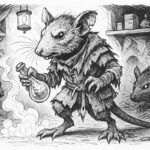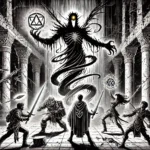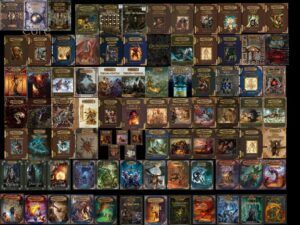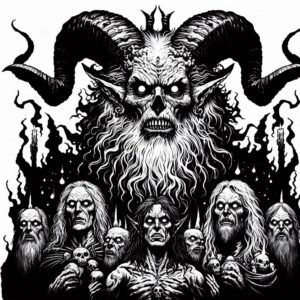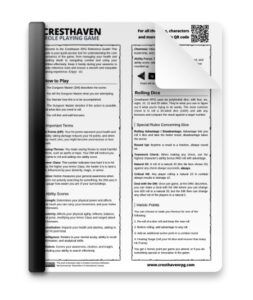Tabletop role-playing games like Cresthaven RPG are all about creativity, collaboration, and fun. However, as a Dungeon Master (DM), you may encounter situations where players introduce unconventional or uncomfortable ideas, or behaviors disrupt the game. Setting clear boundaries and handling these moments thoughtfully ensures everyone has a positive experience.
This guide will help you establish ground rules, manage difficult scenarios (like inappropriate content or antisocial behavior), and maintain a respectful and engaging atmosphere at your table.
1. Setting Boundaries Before the Game
Establish a Social Contract
A social contract is a set of guidelines agreed upon by everyone at the table. It outlines acceptable behavior, themes, and playstyle expectations.
Topics to Cover:
- Content Boundaries: Discuss whether themes like sexual content, graphic violence, or horror are appropriate.
- Player Expectations: Agree on the importance of respecting each other’s contributions, showing up on time, and being prepared.
- Gameplay Style: Decide on the tone of the campaign (serious, comedic, lighthearted, etc.) and align expectations for roleplay and problem-solving.
Use Session Zero
Session Zero is a pre-game meeting where you establish rules, create characters, and discuss the game world. It’s the ideal time to:
- Identify sensitive topics players want to avoid.
- Introduce safety tools, such as:
- X-Card: Players can tap the card to signal discomfort without explanation.
- Pause/Stop Signals: A simple way to pause or stop a scene if it becomes too intense.
2. Dealing with Weird or Inappropriate Ideas
Sometimes players may propose unconventional ideas, like seducing dragons or engaging in morally ambiguous acts. While creativity is welcome, you need to balance fun with appropriateness.
How to Handle:
- Redirect the Action: If an idea doesn’t fit the tone or rules, guide the players toward a different approach. For example:
- “The dragon seems completely uninterested in romance, but it might respond to an offering of treasure.”
- Be Honest and Direct: If a suggestion crosses a line, calmly explain why it’s not suitable:
- “Let’s avoid themes like that—it doesn’t fit the tone of our game.”
- Turn It Into a Story Opportunity: Use the odd idea to create a humorous or teachable moment within the game.
3. Managing Antisocial Behavior
Antisocial behavior, such as interrupting, arguing, or intentionally derailing the game, can disrupt the group dynamic. Addressing these issues early is essential.
Types of Antisocial Behavior and Solutions:
The Spotlight Hog
- Behavior: One player dominates the game, leaving others feeling sidelined.
- Solution: Encourage group involvement:
- “Let’s hear what the rest of the party wants to do.”
- Use mechanics, like splitting turns evenly, to ensure balance.
The Rules Lawyer
- Behavior: A player constantly challenges the DM’s rulings.
- Solution: Politely assert your role:
- “I appreciate your input, but let’s stick with this ruling for now to keep the game moving.”
- Offer to discuss the rule after the session.
The Edgelord
- Behavior: Introduces excessively dark, violent, or disturbing themes.
- Solution: Redirect or set firm boundaries:
- “Let’s tone that down—it’s not the kind of story we’re aiming for.”
The Distracted Player
- Behavior: Consistently disengaged, using their phone or not paying attention.
- Solution: Re-engage them:
- “What does your character think about this situation?”
- Privately discuss how they’d like to contribute more.
4. Handling Conflict Between Players
Conflict between players can derail a session. As the DM, you play a key role in mediating disputes.
Steps to Resolve Player Conflict:
- Stay Neutral: Avoid taking sides.
- Pause the Game: Address the issue calmly and privately if possible.
- Seek Compromise: Encourage players to find common ground.
- Set Consequences: If a player’s behavior continues to disrupt the game, consider asking them to step out.
5. Fostering a Safe and Inclusive Table
Encourage Respect
Make it clear that everyone’s comfort and enjoyment are priorities. Discourage interrupting, mocking, or dismissing other players’ ideas.
Be Flexible
Adapt to your group’s preferences and adjust the game’s tone as needed to maintain a comfortable environment.
Check In Regularly
Ask for feedback after sessions to ensure everyone is enjoying themselves and feels heard. Use questions like:
- “Is there anything that made you uncomfortable?”
- “What was your favorite part of today’s game?”
6. When to Take a Break
If tensions are high or the game veers off track, it’s okay to pause. A short break gives everyone time to reset and refocus.
How to Call a Break:
- “Let’s take five minutes to grab snacks and regroup.”
- “This seems like a good time to pause before we continue the story.”
7. Know When to Remove a Player
While rare, there may be situations where a disruptive player refuses to respect boundaries. If this happens:
- Have a private conversation to explain the issue.
- If behavior doesn’t improve, it’s okay to ask them to leave to preserve the group dynamic.
Conclusion
Running a successful Cresthaven RPG game involves more than storytelling and combat; it’s about creating a safe and inclusive environment for everyone at the table. By setting boundaries, addressing challenging scenarios thoughtfully, and fostering open communication, you ensure your sessions remain enjoyable and collaborative.
With these strategies in place, you’ll be equipped to handle even the most unconventional ideas and behaviors, keeping the focus on the adventure and the fun of playing Cresthaven RPG.
Discover more from Cresthaven RPG
Subscribe to get the latest posts sent to your email.
